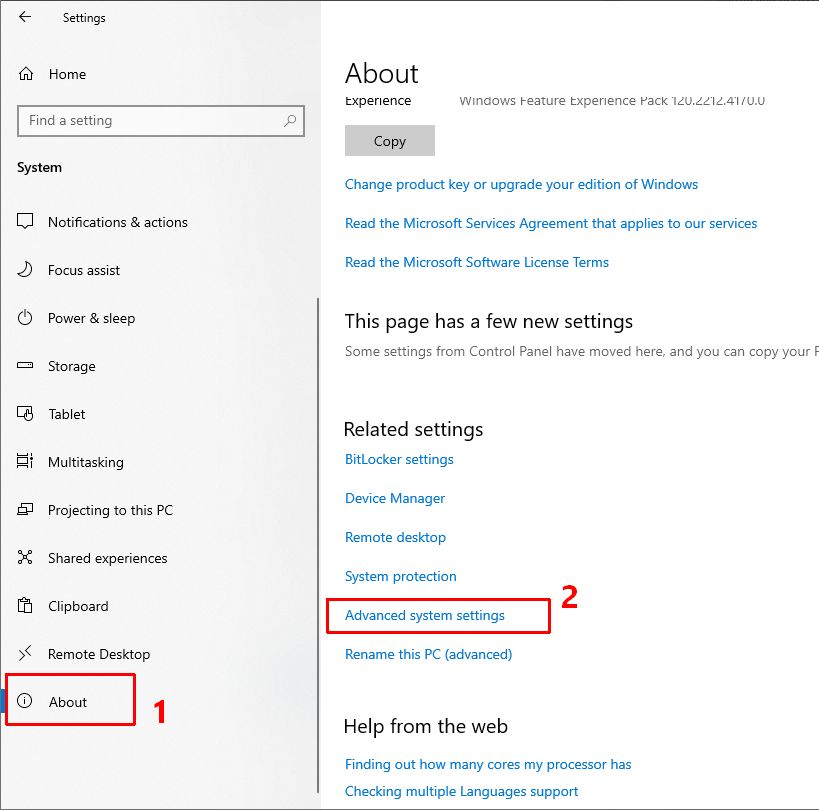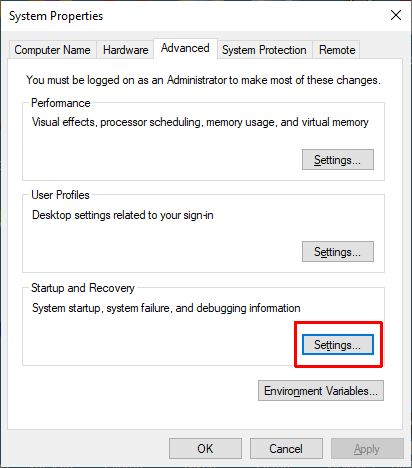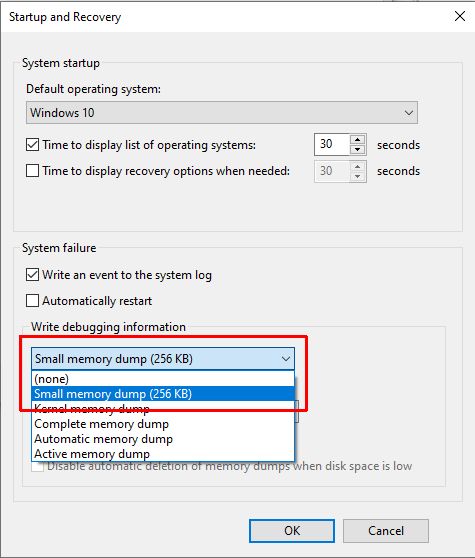Windows 10 Minidump – Configure Debugging Information
If a Windows 10 system runs into a serious problem, the system will be halted and Windows will show a blue screen with a stop error. This blue screen of death (BSOD) means a software error caused a kernel-level fault. In some cases, the information on the screen can be enough to analyze and fix the error. But in many cases, more information is needed to troubleshoot and solve the BSOD. For this, the Windows 10 minidump file can be used.
The minidump is basically an instrument to analyze the system crash. It represents the state of the system as it was running when the error happened. A minidump file contains only a minimal amount of information though. The stop error code, loaded device drivers, and some process and processor information. But since many stop errors are caused by device drivers or memory errors, this information can be enough to find the cause.
Configure the system to create a minidump
If you want Windows 10 to create a minidump file when it crashes, you can configure this through the system settings.
- Open Settings from the Start menu.
- Select About in the left-hand tab (1) in the Settings window (1).

- In the right-hand panel, scroll down to Related settings and then click the Advanced system settings link (2). This will open a new window with the System Properties.
- In the System Properties window, click the Settings button in the Start and Recovery group.

This will again open a new window showing the System startup options. - Under Write debugging information, select the Small memory dump (256 KB) option.

- To change the location of the minidump file, the path in the Small dump directory field can be changed.
- Click the OK button to confirm the startup changes for system failure.
- Click the OK button in the System Properties window to close it.
- Finally, close the Settings window.
The next time a stop error occurs and the system is halted showing a blue screen, a minidump file will be created in the specified path.
Where is the minidump file stored?
The path for the minidump file can be configured, but by default is %SystemRoot%\Minidump. The %SystemRoot% is an environment variable that translates to C:\Windows on most systems. C: depends on the system drive letter.
Can I safely delete a minidump file?
Yes, the minidump files are files with information about a crash. After using it for analyzing an error, it can be deleted. Depending on where the file is saved, a user account with admin-level privileges may be needed.
What file format is a minidump?
The file format for a minidump file is binary. The file extension is .DMP which indicates the type of file.
How can I open a minidump file?
In Windows 10, you can open a minidump file using the WinDbg program, which can be downloaded from the Microsoft App store. Alternatively, you can download the Windows SDK for Windows 10 and install the Debugging Tools for Windows.






Thank you. It works.
@Fritz Liessling - Thank you for your feedback. I understand that you are looking for other resolutions, but within Windows…
Although the answer to this question is correct, it is really a cop-out answer. It's easy enough to find answers…
To the pcauthorities.com administrator, You always provide useful links and resources.
???? ?? ??? The Last of us